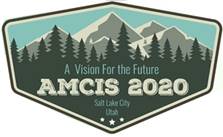Loading...
Abstract
Social media platforms have become increasingly prevalent means of human communication ever since they grew in popularity across the world. As a result, more text data is available than ever before. This abundance of information is advancing the field of text data analysis and natural language processing by allowing the evaluation of more massive data sets within a specific context. One specific context that has not been as explored is the evaluation of text data generated during a natural disaster. Having access to the right information at the right time is critical during any phase of the disaster. Data created and shared on social networks can be as essential as other supplies like bottled water and batteries (Aldrich, 2017). One example of using social media is during the 2016 flood in Louisiana. A flood inundation map was created with the help of the Baton Rouge fire department, public officials, NOAA and air patrol imagery, and the social media users and was further edited by the social media users (Kim & Hastak, 2018). The focus of this project is to analyze a dataset of tweets collected before, during, and after Hurricane Dorian related to “HurricaneDorian.” The goal is to provide a framework for disaster management through text mining and spatial analysis techniques using Twitter data. Specifically, this research aims to answer the following research questions: How can social media (Twitter) be utilized to identify, process, and comprehend critical elements of an incident or situation during a natural disaster? How do the features of tweets’ (topic, sentiment, etc.) and characteristics of users (influence, category, etc.) impact the level of attention received by tweets? Do these characteristics change based on the distance (temporal and spatial) from a natural disaster?
Recommended Citation
Goudarzi, Cyrus and Mondaresnezhad, Minoo, "Text Analytics and Spatial Visualization of Social Media Data during the Various Stages of a Disaster: The Case of Hurricane Dorian" (2020). AMCIS 2020 TREOs. 44.
https://aisel.aisnet.org/treos_amcis2020/44
Abstract Only
When commenting on articles, please be friendly, welcoming, respectful and abide by the AIS eLibrary Discussion Thread Code of Conduct posted here.


